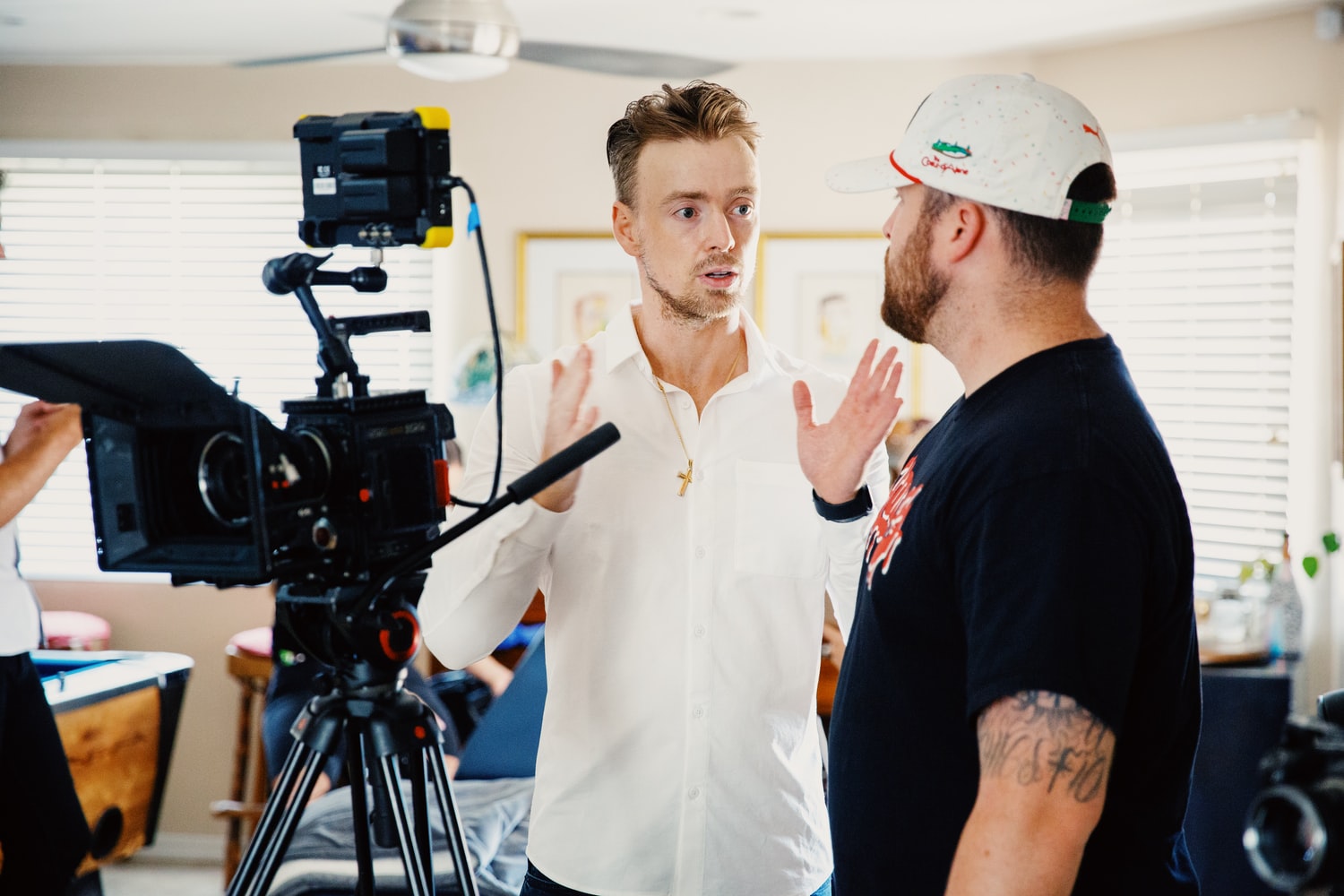

In-house video production facilities are now essential for brands to be competitive. So why throw away that advantage with ineffective media management?
It’s not new information that a majority of household brands have taken some aspect of their content strategy in-house; it’s been trending that way for years. The Association of National Advertisers in the U.S. found that 78% of its members had some kind of in-house agency in 2018, versus 58% in 2013. At the beginning of 2020, 34% of marketers said they planned to take more deliverables in-house that same year.
On the face of it, the in-house content studio is a modern marvel and savvy financial decision -- P&G, the world’s largest advertiser, has managed to cut external fees by $750 million as of 2018 with this approach.
But what happens when the volume of assets created by in-house teams reaches a critical mass and outgrows the capability of the current Media Asset Management (MAM) system - if there even is one?
How are socially distanced editors, working remotely, disrupting traditional studio workflows?
How can in-house creative teams leverage cloud technology to improve efficiency, for example, production teams need immediate approval on the day’s work by a stakeholder thousands of miles away?
Adopting in-house content production is an important step many brands - like Home Depot, Mailchimp, Unilever and Mastercard, possibly even your own company - have already made. Now, they’ve reached a point where they must maximize the return on this investment though effective media asset management. With the right tools and technology in place, you can increase the value of stored assets through workflow efficiencies, avoid production disruption through intelligent re-use of existing content, and - vital in the light of the 2020 experience - pivot seamlessly to remote or home working without losing productivity.
Avoiding the Dreaded Campaign Re-Shoot
Major brand campaigns cost major money. That’s all well and good when the ROI on the campaign is maximized by making sure as many people see it as possible. That’s what these campaigns are designed for: to be seen widely and often and everywhere. But what happens when the campaign has to be completely reshot? Consider an on-location shoot with models, production crews, hair and makeup teams, stylists, assistants etc. The associated costs for these services jump astronomically once you factor in hotels, airfare and meals. Depending on the desired end result, costs can vary anywhere from $3,000 for a simple project or upwards of $200,000 for a blockbuster-caliper production.
Now imagine completing the day’s shoot and dismissing the production team, all the contracted parties return home in the days following. At the same time, the producer back at the studio receives the hard drives of footage that have been shipped over from the set, days later. That delay directly reflects days of exposure to uncontrollable security risks: hard drives represent a potential single point of failure for the entire production. Shipping or traveling with the hard drives open up the possibility of them breaking from being jostled too harshly in cargo, being confiscated by TSA, or simply being misplaced during transit.
Even if your hard drives survive the flight, there’s still the possibility that the work is deemed unsatisfactory by the stakeholders and must be reshot, effectively nullifying half a million dollars worth of work. If you don’t have access to immediate approval from the producer, you could find yourself in a similar and not unlikely scenario.
Modern MAMs like Curator address the pitfalls (including lost time, potential security breaches, and file damage) of shuttling physical hard drives around the world head on. Instead of packaging up the hard drives to be shipped or carried, the production manager can stream frame-accurate proxies right from location - whether that’s on set or from their hotel room (or anywhere in between), on basic 2mb wi-fi. If the stakeholders don’t like what they see, they can provide clear feedback so the production crew can make adjustments before cast and crew are dismissed and the set broken down. The time, money and frustration this simple step can save a company truly is immeasurable.
Closing the Time/Distance Gap Between Production & Post
We just mentioned streaming proxy workflows, but need to reiterate just how important these are. Cloud-based, streaming proxy workflows close the time and distance gap between the on-set crew and post-production team. Not only do those participants on the other end of the process have immediate access to review and approve video assets captured in studio or on location, but they can begin editing once that approval is granted. This is especially handy for lean, in-house creative teams that are tasked with developing massive amounts of content for their businesses, from fast-paced, reactive social media to branded content series to training videos and commercial work.
With proxies - small but visually detailed, frame-accurate copies of the original hi-res video asset (more on proxies here) - teams can begin editing footage immediately after it’s ingested into their media asset management system (Curator, perhaps) via the cloud, even if production and post teams are separated by thousands of miles.
This workflow creates immediacy and a real-time connection between studio (or location) shoots, editors and producers who are almost never in the same physical location. Once producers approve the creative assets, editors can begin editing using proxy files with almost no down time.
IPV’s Curator does the heavy lifting here, automatically generating proxy versions of all media files as they're ingested. As “lighter” versions of their full-res counterparts, proxy files make it an easier and smoother editing process that won’t bog down systems. This is especially useful as companies have transitioned to fully remote WFH or hybrid remote working setups. In-house studio teams who have found themselves working on their company-issued laptops via at-home internet connections will experience vast improvements when working with proxies.
When the final piece is approved and finalized, users conform or render the edit, which automatically switches out the proxy copies and replaces them with the high-resolution originals for final export and delivery. Curator performs this process as a remote conform, or render, meaning all the work is done via the cloud, leaving one’s personal computer freed up for whatever work they need to carry on with - again, a massive benefit to do-it-all creatives.
With a modern MAM system like Curator in place, the old fashioned, slow and insecure data transfer method of shipping hard drives in order to review and edit footage takes a back seat. While that footage is eventually needed for final conform, it’s no longer a necessary part of the creative process, removing the bottleneck it can create.
The Greatest Risk to Content is Lack of Security
Security breaches are the greatest threat to a brand and their content (just check out this study from Deloitte to understand the full impact). One major benefit of brands taking their creative in-house is reducing the number of parties who have access to what is oftentimes highly confidential information and thus, adding another layer of protection. New product launches - like a new car or - *gasp* - a brand new iPhone - among other newsworthy announcements are kept under strict lock and key. One area, however, where brands introduce potential security risks is when transporting highly sensitive campaign content via hard drive from set to post.
With a modern, cloud-native MAM, you 100% obviate the need for that content to ever physically leave the studio – it gets uploaded from the studio into the cloud – everyone accesses it from there, leaving no room for security breach or loss. If hard drives need to be shipped from a distant location, teams can ensure the safest transit possible, without the need to rush it back for ASAP approval and editing - that’s already in motion thanks to proxy cloud-based workflows.
Simply Having an In-House Studio is Only Part of the Equation
Brands that have the resources to implement an in-house content studio have likely invested a lot of time and money to do so. Maybe you even know from first hand experience. The whole purpose of the in-house studio can be attributed to cost savings and maintaining complete control over video production from start to finish. That said, you won’t maximize your ROI simply by virtue of having an in-house studio; you need to consider the complete life cycle of the content from capture to approval to post production to distribution to archive.
Without the right tool(s) in place to facilitate real-time stakeholder review and approval, close the time/distance gap between production and post, and mitigate security risks to content, you’ve only half invested in your in-house solution and risk nullifying any ROI you had expected.
Is Curator right for you?
Book time directly with Gabrielle below to see how Curator can help you take control of your video assets and produce quality video content faster than ever! 👇👇👇
Speak Your Mind